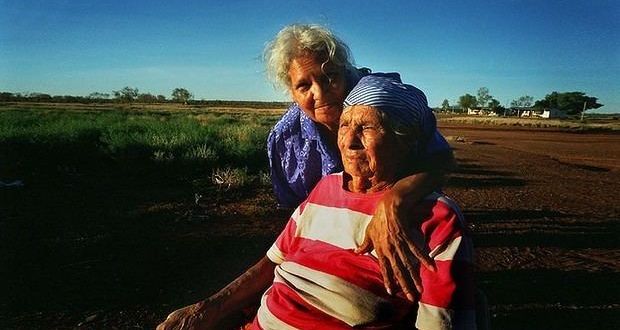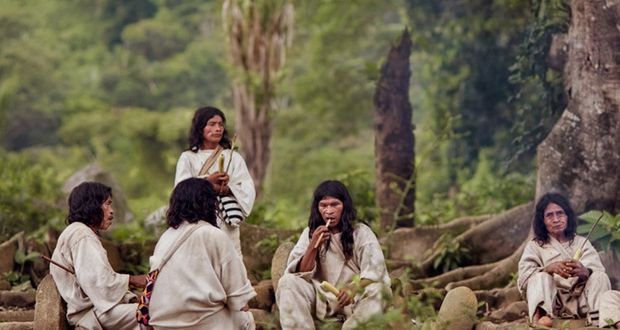For part 1 of this series, click here
For part 2 of this series, click here
26Molly Kelly's Epic Outback Journey

At the age of 13, Molly Kelly, an Australian aboriginal girl, was forcibly separated from her family and placed in a government institution to serve as a domestic servant. She managed to escape and embarked on a remarkable journey, walking 1,000 miles across the unforgiving Australian outback to return home. Between 1905 and 1971, Australian authorities forcibly removed thousands of indigenous children from their families as part of the controversial policy known as the Stolen Generations.
27. When writing in the Hanunó'o script, used for an indigenous language by the Mangyan peoples in the Philippines, both right-handed and left-handed individuals often produce texts that are mirror images of each other, not only in letter orientation but also in writing direction.
28. In an unusual tradition, the Sichuan tribal people in China used to consume panda urine to help dissolve accidentally ingested needles.
29. The Ainu are an indigenous tribe in Japan whose men are known for their traditional practice of growing giant beards.
30. Blood type "O" is the predominant blood type among indigenous populations of the Americas, particularly in Central and South American populations, with a frequency approaching nearly 100%.
Latest FactRepublic Video:
15 Most Controversial & Costly Blunders in History
31Himba People's Otijze Skin Paste

The Himba people of Namibia apply otjize paste, a mixture made from butterfat and ochre pigment, to cleanse their skin over extended periods due to water scarcity. They also use it as protection against the hot and arid climate and to ward off mosquito bites.
32. The indigenous Chukchi people, residing on the Chukotka Peninsula west of Alaska, believe they have ancestral connections to whales. Their way of life predominantly revolves around the hunting of marine mammals.
33. The Sami people are Norway's indigenous population, with a cultural heritage spanning over 11,000 years. They live in tents called "lavvu" and follow reindeer herds for sustenance. Reindeer herding is central to Sami culture, providing them with meat and fur and serving as their primary mode of transportation through reindeer sledding.
34. In 2002, several M?ori tribal groups from New Zealand voiced concerns to LEGO regarding the extensive use of their language in the Bionicle line of toys.
35. In Ghana, there exists a tribal belief known as "sankofa," which emphasizes that the past serves as a guide for planning the future. A chicken reaching back to take an egg from its own back serves as the symbol for it.
36Kogi Tribe's Unique Priest Selection

Colombia's Kogi tribe selects their priests from birth and raises them in a dark cave for a decade to foster a deep connection with the Earth.
37. Greenland is home to the world's northernmost indigenous people, the Inughuit. They live isolated, hundreds of miles away from even their fellow Inuit, and have developed a highly specialized culture that enables them to thrive in the high Arctic. Today, they comprise only 1% of Greenland's modern population.
38. The Lakota tribe has its own rendition of the Slenderman legend known as "Walking Sam." This entity, depicted as wearing a stovepipe hat, is said to attempt to influence individuals to commit suicide.
39. Maria Sabina was an indigenous medicine woman who introduced the Western world to psilocybin. Her community's rituals were exploited for power and fame, and she ultimately lived in poverty.
40. Indigenous peoples in the Amazon region drink Nihamanchi, a cassava-based beer. The brewing process involves chewing cassava tubers, spitting them into large jars, and allowing them to ferment with saliva. It is described as having a taste similar to "alcoholic buttermilk."
41Indigenous Australians in Prisons

Indigenous Australians make up 21% of Australia's prison population, despite comprising only 2.5% of the country's total population.
42. The Vandals, a large East Germanic tribe originating from Poland, gradually migrated to Roman territories during the fifth century while fleeing from the Huns. They conquered Spain and most of northern Africa and eventually sacked and looted Rome. The term "vandalism" is derived from their name.
43. The Wampanoag and other tribes of the Eastern United States hold an annual demonstration every Thanksgiving known as the Day of Mourning. This event raises awareness of the historical and ongoing struggles faced by Native American tribes.
44. The Lenape tribe were the original inhabitants of Manhattan, New York, and were forced to leave 300 years ago. Tribes from across the country returned to New York in 2019 for the first Pow Wow in centuries to celebrate their origins.
45. Cree speakers served as 'code-talkers' for the Canadian military during World War I, a contribution that remains relatively unknown and under-recognized.
46Francis Pegahmagabow: WWI Marksman

Francis Pegahmagabow, a Canadian indigenous man who fought in World War I, is renowned for his marksmanship. He killed 378 enemies with his Ross rifle and captured another 300, making him one of the most successful marksmen in the conflict.
47. Indigenous Americans used to make pictorial calendars known as "Winter Counts" to record important events or information relevant to their tribes.
48. In 1963, the head of Arruda, Junqueira & Company, Antonio Mascarenhas Junqueira, in his hatred of an Amazonian tribe, dropped sticks of dynamite from above on their village after luring them out with sugar: "These Indians are parasites; they are shameful. It's time to finish them off; it's time to eliminate these pests. Let's liquidate them." Later, some of the killers returned on foot to finish off the survivors.
49. The Muisca people of ancient Mesoamerica possessed such an abundance of gold that it became their preferred material for handicrafts.
50. In British Columbia, there is an indigenous group called the Kwakwaka'wakw. There are now fewer than 250 people who speak their language, known as Kwak'wala.



